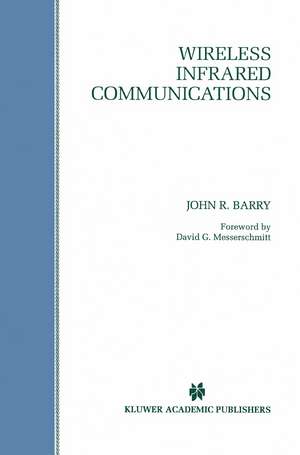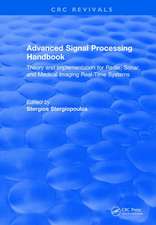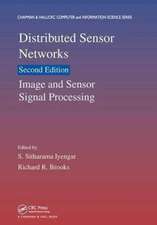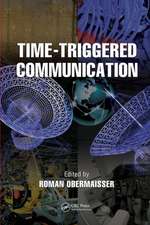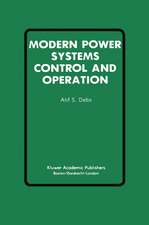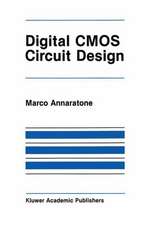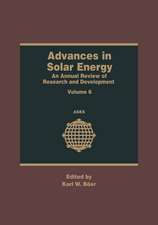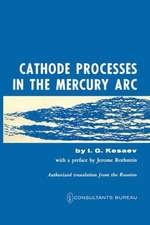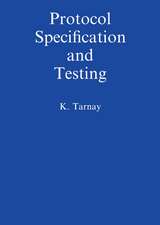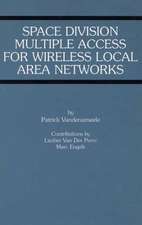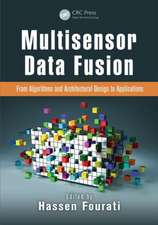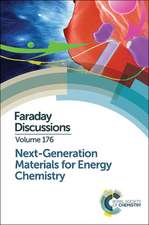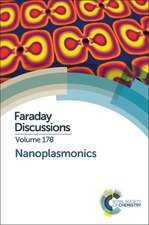Wireless Infrared Communications: The Springer International Series in Engineering and Computer Science, cartea 280
Autor John R. Barryen Limba Engleză Paperback – 8 oct 2012
| Toate formatele și edițiile | Preț | Express |
|---|---|---|
| Paperback (1) | 635.31 lei 6-8 săpt. | |
| Springer Us – 8 oct 2012 | 635.31 lei 6-8 săpt. | |
| Hardback (1) | 640.55 lei 6-8 săpt. | |
| Springer Us – 31 aug 1994 | 640.55 lei 6-8 săpt. |
Din seria The Springer International Series in Engineering and Computer Science
- 24%
 Preț: 1041.98 lei
Preț: 1041.98 lei - 20%
 Preț: 643.50 lei
Preț: 643.50 lei - 18%
 Preț: 1225.62 lei
Preț: 1225.62 lei - 18%
 Preț: 965.02 lei
Preț: 965.02 lei - 20%
 Preț: 646.12 lei
Preț: 646.12 lei - 18%
 Preț: 948.79 lei
Preț: 948.79 lei - 20%
 Preț: 646.62 lei
Preț: 646.62 lei - 15%
 Preț: 637.46 lei
Preț: 637.46 lei - 20%
 Preț: 643.83 lei
Preț: 643.83 lei - 18%
 Preț: 949.23 lei
Preț: 949.23 lei - 20%
 Preț: 644.48 lei
Preț: 644.48 lei - 20%
 Preț: 994.92 lei
Preț: 994.92 lei - 20%
 Preț: 645.97 lei
Preț: 645.97 lei - 18%
 Preț: 946.87 lei
Preț: 946.87 lei - 20%
 Preț: 995.57 lei
Preț: 995.57 lei - 18%
 Preț: 956.99 lei
Preț: 956.99 lei - 20%
 Preț: 644.98 lei
Preț: 644.98 lei - 15%
 Preț: 649.54 lei
Preț: 649.54 lei - 18%
 Preț: 950.21 lei
Preț: 950.21 lei - 18%
 Preț: 1221.38 lei
Preț: 1221.38 lei - 18%
 Preț: 957.62 lei
Preț: 957.62 lei - 15%
 Preț: 643.99 lei
Preț: 643.99 lei - 18%
 Preț: 948.47 lei
Preț: 948.47 lei - 18%
 Preț: 947.35 lei
Preț: 947.35 lei - 20%
 Preț: 1284.65 lei
Preț: 1284.65 lei - 20%
 Preț: 1628.31 lei
Preț: 1628.31 lei - 20%
 Preț: 1285.78 lei
Preț: 1285.78 lei
Preț: 635.31 lei
Preț vechi: 747.43 lei
-15% Nou
Puncte Express: 953
Preț estimativ în valută:
121.58€ • 132.02$ • 102.13£
121.58€ • 132.02$ • 102.13£
Carte tipărită la comandă
Livrare economică 22 aprilie-06 mai
Preluare comenzi: 021 569.72.76
Specificații
ISBN-13: 9781461361626
ISBN-10: 1461361621
Pagini: 192
Ilustrații: X, 181 p.
Dimensiuni: 155 x 235 x 10 mm
Greutate: 0.28 kg
Ediția:Softcover reprint of the original 1st ed. 1994
Editura: Springer Us
Colecția Springer
Seria The Springer International Series in Engineering and Computer Science
Locul publicării:New York, NY, United States
ISBN-10: 1461361621
Pagini: 192
Ilustrații: X, 181 p.
Dimensiuni: 155 x 235 x 10 mm
Greutate: 0.28 kg
Ediția:Softcover reprint of the original 1st ed. 1994
Editura: Springer Us
Colecția Springer
Seria The Springer International Series in Engineering and Computer Science
Locul publicării:New York, NY, United States
Public țintă
ResearchCuprins
1. Introduction.- 1.1 Comparison of Infrared and Radio Communications.- 1.2 The Wireless Infrared Channel.- 1.3 History of Wireless Infrared Communications.- 1.4 A High-Speed Wireless LAN.- 1.5 Optoelectronic Components.- 1.6 Outline.- 2. Link Analysis and Optics Design.- 2.1 Introduction.- 2.2 Thin-Film Optical Filters.- 2.3 Truncated Spherical Concentrators.- 2.4 Joint Optimization of Transmitter and Filter.- 2.5 Summary and Conclusions.- 3. Receiver Design.- 3.1 Introduction.- 3.2 Limitations on Photodetector Bandwidth.- 3.3 Analysis of Current-Feedback Pair.- 3.4 Optimal Filtering for Quadratic Noise Spectrum.- 3.5 Choosing the Right Transistor.- 3.6 Design Procedures.- 3.7 Optional Design Embellishments.- 3.8 Summary and Conclusions.- 4. Modeling Multipath Dispersion.- 4.1 Introduction.- 4.2 Models for Diffuse Reflectors and Transmitters.- 4.3 Multiple-Bounce Impulse Response.- 4.4 Simulation and Experimental Results.- 4.5 Multipath-Induced Power Penalty.- 4.6 Summary.- 5. Modulation and Equalization.- 5.1 Intensity Modulation and Direct Detection.- 5.2 Binary Modulation.- 5.3 Multi-Level Modulation.- 5.4 Discussion.- 5.5 ML Sequence Detection and Equalization for PPM.- 5.6 Coherent Optical Communication.- 5.7 Summary.- 6. System-Level Issues.- 6.1 Introduction.- 6.2 Single-Cell Architectures.- 6.3 Overlapping Cells.- 6.4 Summary.- 7. Conclusions and Future Work.- 7.1 Conclusions.- 7.2 Future Work.- References.- A. Power Efficiency on the Linear Gaussian-Noise Channel.
